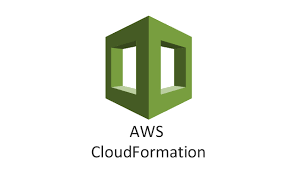MalformedPolicyDocument errors in AWS CloudFormation can be resolved with this handy guide from our experts.
At Bobcares, we offer solutions for every query, big and small, as a part of our Server Management Service.
Let’s take a look at how our Support Team is ready to help customers with MalformedPolicyDocument errors in AWS CloudFormation.
How to resolve MalformedPolicyDocument errors in AWS CloudFormation
Many of our customers have been facing trouble when they attempt to create or update an AWS CloudFormation stack. The ValidateTemplate API in the AWS CloudFormation is able to validate only the syntax of the template.
The API is not able to validate the property values that we specify for a particular resource. Furthermore, we cannot verify the validity of the policy as the policy document is ultimately a part of the property value.

Ultimately, we wind up getting the “MalformedPolicyDocument” error since the policy document is not semantically or syntactically correct according to the grammar of the policy language.
As per our Support Team’s recommendations, we have to verify the validity of the policy document for the specific resource type that it is a part of.
Before we dive into the solution, we have to identify the error message details in the stack events with these steps:
- First, we have to open the AWS CloudFormation console.
- Then, select Stacks from the navigation pane.
- Next, choose the stack with the error and select the Events tab.
- After that, we have to look for a message in the Status reason column that explains the reason behind the error.
In case the above steps do not work out, we can use the errorMesssage property of the CloudTrail event for the operation on the resource type instead. Let’s take a look at how that’s done:
- First, open the CloudTrail console.
- Then, select Event history.
- Next, choose the Event name in the Filter search box as the lookup attribute and PutRolePolicy in the adjoining text box.
- After that, we will set the Time range for the CloudTrail event to the time in the error message.
- Then, we can check the errorMessage property for the cause behind the error.
How to Validate the policy passed in the CloudTrail event
The CloudTrail event responsible for the error often consists of the resolved form of the policy document. We can copy this document and then create a new policy in the AWS Management Console directly for that specific resource with these steps:
- First, we have to open the AWS CloudTrail console.
- Next, we will choose Event history from the navigation pane.
- Then, choose the Event name in the Filter search box as the lookup attribute and PutRolePolicy in the adjoining text box.
- After that, we will set the Time range of the CloudTrail event to the time in the error message.
- Next, we have to select the event in the Event name column.
- Then, we will copy the value of the policyDocument property found under the requestParameters in the Event record.
- Remember to remove “\” escape characters via a text editor from the policy document.
- After that, we will open the IAM console and choose Policies in the navigation pane.
- Next, we will select Create policy and then JSON tab.
- Finally, we will enter the policy document from step 6 and select Review policy.
[Looking for a solution to another query? We are just a click away.]
Conclusion
In essence, our skilled Support Engineers at Bobcares demonstrated how to deal with MalformedPolicyDocument errors in AWS CloudFormation.
PREVENT YOUR SERVER FROM CRASHING!
Never again lose customers to poor server speed! Let us help you.
Our server experts will monitor & maintain your server 24/7 so that it remains lightning fast and secure.







0 Comments